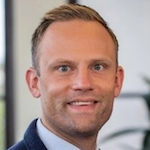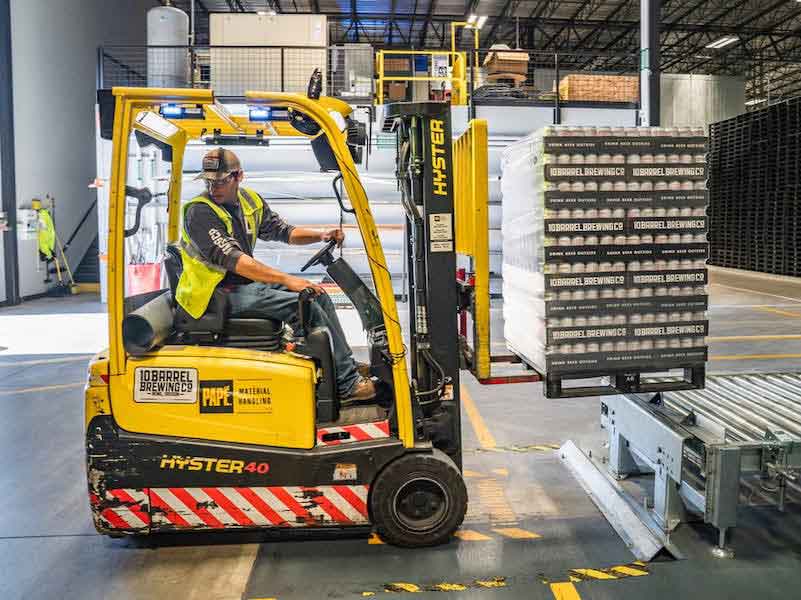Historically, worker health and safety at finishing and coating operations have been addressed from two separate silos.
 Steve CareySafety is normally handled by a finance and safety team focused on occupational safety, lowering instances of injury, and workers’ compensation cost reductions. On the other side, health and wellness programs are typically handled by an HR team focused on common conditions and risk factors while aiming to reduce healthcare costs.
Steve CareySafety is normally handled by a finance and safety team focused on occupational safety, lowering instances of injury, and workers’ compensation cost reductions. On the other side, health and wellness programs are typically handled by an HR team focused on common conditions and risk factors while aiming to reduce healthcare costs.
Both sides of the house share the same priority: the health and well-being of all finishing and coating facility employees. Each can also impact the other: work conditions impact overall health, and overall health impacts safety on the job.
Yet the way most finishing and coating organizations manage these risks leaves a gap that presents an opportunity for improvement. Total Worker Health requires a new perspective to blend casualty data with benefits data. Taking a holistic approach offers a more comprehensive understanding of risk management that produces best-in-class results.
What Are The Advantages Of An Integrated Approach?
-
 Maddie RichDeeper understanding of health conditions for a more targeted, effective safety strategy: Taking a more strategic approach to integrating data can provide a clear view of what contributes to absence and injury in the workplace. Examining medical claims data shines a spotlight on the full impact across worker risk and health. Once this is understood, organizations can make investments or modifications to realize improved outcomes. For example, many people within manufacturing employee populations develop health problems related to musculoskeletal/connective tissues. Even though these physical issues may originate and escalate on the job, they have gradual effects that don’t often show up as workers’ comp claims. With insights like these, safety professionals and loss control teams can better identify the types of injuries likely to occur and design programs to focus on these known risk factors.
Maddie RichDeeper understanding of health conditions for a more targeted, effective safety strategy: Taking a more strategic approach to integrating data can provide a clear view of what contributes to absence and injury in the workplace. Examining medical claims data shines a spotlight on the full impact across worker risk and health. Once this is understood, organizations can make investments or modifications to realize improved outcomes. For example, many people within manufacturing employee populations develop health problems related to musculoskeletal/connective tissues. Even though these physical issues may originate and escalate on the job, they have gradual effects that don’t often show up as workers’ comp claims. With insights like these, safety professionals and loss control teams can better identify the types of injuries likely to occur and design programs to focus on these known risk factors. -
Ability to monitor the impact of plan design changes on Workers’ Compensation Claims: With healthcare costs rising, companies increasingly question how they can reduce this expense. When HR teams handle this decision in a vacuum, they risk other unforeseen impacts to the bottom line. For example, if a company raises the deductible on its medical plans or cuts health benefits in another way, this could cause an increase in workers’ comp claims. If employees know they have more out-of-pocket exposure, they may be more likely to declare an illness or injury as a workers’ compensation claim to avoid using the medical plan. If the two departments are operating in separate silos, this correlation may not be realized.
-
Proactive Solutions: By pairing accident prevention with wellness programming, organizations can improve the overall health of their employees. This often results in avoided injuries and work comp claims and lower medical claim costs. An integrated approach offers an expanded view of data so it can be better utilized to drive positive outcomes. Breaking down the data in each area uncovers specific factors like injury types, plant locations, injury costs, and lost productivity time to highlight where investments can be made to improve the full impact across risk and health.
-
Healthy Workers = Positive Impact on the Bottom Line: Workplace wellness programs that address chronic health conditions and support risk management safety initiatives have many potential benefits. These include higher employee morale, improved health, increased productivity, less frequent and severe workers’ compensation claims, and reduced medical plan costs.
Achieving these gains for your finishing and coating operation doesn’t require much more than communication and collaboration. Consider breaking down the silos between health and safety and between your property and casualty insurance and employee benefits advisors to create a holistic approach that will benefit the bottom line and improve the wellbeing of your most valuable asset— your people.
Steve Carey, CAWC and Madeleine Rich are with Oswald Companies in Bloomfield Hills, Michigan. Reach them atSCarey@oswaldcompanies.com ormrich@oswaldcompanies.com



































